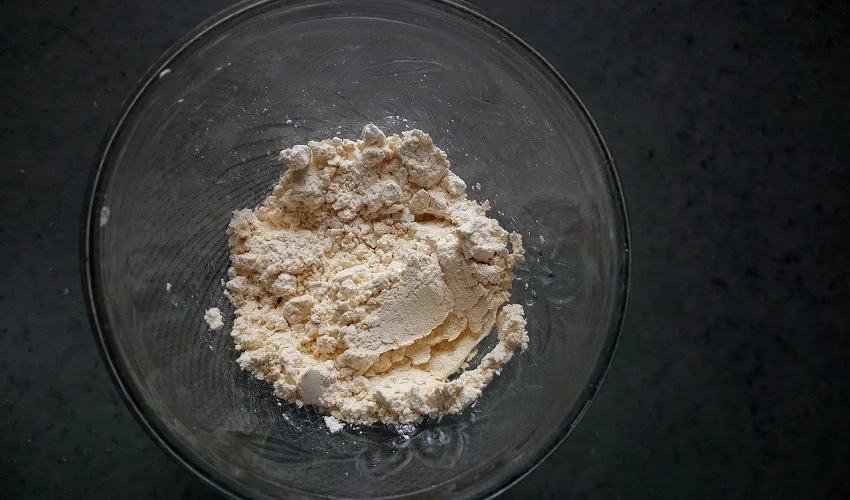What is glycemic index?
The glycemic index is a measure of how quickly a carbohydrate-containing food raises blood glucose levels. It ranks foods on a scale from 0 to 100, with higher values indicating foods that cause a rapid increase in blood sugar. Understanding the glycemic index is particularly important for diabetics as it helps them make informed food choices and manage their blood sugar levels. By choosing foods with a low glycemic index, diabetics can avoid sudden spikes in blood sugar and maintain better control of their condition. It is important to note that the glycemic index is not the only factor to consider when planning a diabetic-friendly diet, but it is a useful tool in understanding the impact of different foods on blood sugar levels.
Importance of glycemic index for diabetics
The glycemic index is a valuable tool for diabetics to manage their blood sugar levels effectively. It measures how quickly carbohydrates in food raise blood sugar levels. For diabetics, it is important to choose foods with a low glycemic index as they cause a slower and more gradual increase in blood sugar levels. This helps in preventing sudden spikes and dips in blood sugar, which can be harmful for diabetics. By understanding and considering the glycemic index of foods, diabetics can make informed choices to maintain stable blood sugar levels and better manage their condition.
How is glycemic index measured?
The glycemic index (GI) is a measure of how quickly a carbohydrate-containing food raises blood sugar levels. It is determined by comparing the blood sugar response to a particular food with the response to a reference food, usually glucose or white bread. The GI is expressed as a numerical value, with higher values indicating a faster and greater increase in blood sugar levels. To measure the GI of a food, participants consume a fixed amount of the food and their blood sugar levels are monitored over a specific period of time. The resulting data is then used to calculate the GI of the food. This measurement is important for individuals with diabetes as it helps them make informed choices about the foods they consume, allowing them to manage their blood sugar levels effectively.
Understanding Besan
What is besan?
Besan, also known as gram flour, is a versatile ingredient commonly used in Indian cuisine. It is made by grinding dried chickpeas into a fine powder. Besan has a distinctive nutty flavor and a slightly earthy aroma. It is rich in protein, fiber, and several essential nutrients, making it a healthy choice for diabetics. Besan has a low glycemic index, which means it causes a gradual rise in blood sugar levels. This makes it an ideal choice for individuals with diabetes who need to manage their blood sugar levels. Moreover, besan is gluten-free, making it suitable for those with gluten intolerance or celiac disease. It can be used to make a variety of dishes, including snacks, sweets, and savory dishes, adding a unique taste and texture to the final product.
Nutritional composition of besan
Besan, also known as gram flour, is a versatile ingredient that is commonly used in Indian cuisine. It is made from ground chickpeas and has a rich nutritional composition. Besan is a good source of protein, fiber, and complex carbohydrates, making it an excellent choice for individuals with diabetes. It has a low glycemic index, which means it does not cause a rapid spike in blood sugar levels. Additionally, besan is rich in vitamins and minerals, including iron, magnesium, and zinc. Incorporating besan into your diet can help regulate blood sugar levels and provide essential nutrients for overall health.
Glycemic index of besan
The glycemic index of besan, also known as chickpea flour, is an important factor to consider for individuals with diabetes. The glycemic index measures how quickly a food raises blood sugar levels. Foods with a low glycemic index are digested and absorbed more slowly, resulting in a gradual increase in blood sugar levels. Besan has a relatively low glycemic index, making it a suitable choice for diabetics. It provides a steady release of energy and helps in maintaining stable blood sugar levels. Incorporating besan into a diabetic diet can help regulate blood sugar levels and promote better overall health.
Impact of Besan on Blood Sugar Levels
Low glycemic index of besan
Besan, also known as chickpea flour, has a low glycemic index, making it a suitable choice for individuals with diabetes. The glycemic index measures how quickly a food raises blood sugar levels. Foods with a low glycemic index are digested and absorbed more slowly, resulting in a slower and more gradual increase in blood sugar levels. This is beneficial for diabetics as it helps to maintain stable blood sugar levels. Besan can be incorporated into various dishes such as pancakes, bread, and desserts, providing a nutritious and diabetic-friendly alternative to other flours.
Slow release of glucose
The slow release of glucose is an important factor for diabetics to consider when managing their blood sugar levels. Foods with a low glycemic index, such as besan, are digested and absorbed more slowly, resulting in a gradual and steady increase in blood glucose levels. This is beneficial for diabetics as it helps prevent sudden spikes in blood sugar, which can lead to complications. By incorporating besan into their diet, diabetics can ensure a more stable and controlled release of glucose, promoting better blood sugar management and overall health.
Stabilizing blood sugar levels
Stabilizing blood sugar levels is crucial for individuals with diabetes. One effective way to achieve this is by consuming foods with a low glycemic index, such as besan. Besan, also known as chickpea flour, has a low glycemic index, which means it does not cause a rapid spike in blood sugar levels. This makes it an excellent choice for diabetics who need to manage their blood sugar levels. By incorporating besan into their diet, individuals with diabetes can stabilize their blood sugar levels and maintain better overall health.
Benefits of Besan for Diabetics
Weight management
Weight management is an essential aspect of diabetes management. For individuals with diabetes, maintaining a healthy weight is crucial in managing blood sugar levels and reducing the risk of complications. Besan, also known as gram flour, can be a valuable addition to a weight management plan for diabetics. With a low glycemic index, besan is digested and absorbed more slowly, resulting in a gradual rise in blood sugar levels. This helps to prevent spikes and crashes in blood sugar, promoting stable energy levels and reducing cravings. Additionally, besan is a good source of protein, which can help to increase feelings of fullness and support weight loss efforts. Incorporating besan into meals and snacks can provide diabetics with a nutritious and satisfying option for managing their weight effectively.
Improved insulin sensitivity
Improved insulin sensitivity is a crucial factor for individuals with diabetes. It refers to the body’s ability to effectively use insulin to regulate blood sugar levels. Besan, also known as chickpea flour, has been found to promote improved insulin sensitivity. This is due to its low glycemic index, which means it causes a slower and more gradual rise in blood sugar levels compared to high glycemic index foods. By incorporating besan into their diet, diabetics can potentially enhance their body’s response to insulin and better manage their blood sugar levels.
Reduced risk of heart disease
Besan, also known as chickpea flour, has a low glycemic index, making it a great choice for individuals with diabetes. But its benefits don’t stop there. Consuming besan regularly can also help reduce the risk of heart disease. This is because besan is rich in fiber and protein, which can help lower cholesterol levels and improve heart health. Additionally, besan is a good source of vitamins and minerals, such as iron and magnesium, which are essential for maintaining a healthy cardiovascular system. So, incorporating besan into your diet can not only help manage your blood sugar levels but also promote a healthy heart.
Incorporating Besan into a Diabetic Diet
Replacing refined flours with besan
Besan, also known as chickpea flour, is a great alternative to refined flours for individuals with diabetes. Unlike refined flours, besan has a low glycemic index, which means it does not cause a rapid increase in blood sugar levels. This makes it a healthier choice for managing blood sugar levels. Besan is rich in fiber, protein, and essential nutrients, making it a nutritious option for diabetics. Additionally, besan can be easily incorporated into various recipes, such as pancakes, breads, and snacks, providing a delicious and diabetes-friendly alternative to refined flours. By replacing refined flours with besan, individuals with diabetes can enjoy their favorite foods while maintaining better control over their blood sugar levels.
Recipes and meal ideas
Besan, also known as chickpea flour, is a versatile ingredient that can be used in a variety of recipes and meal ideas for diabetics. It has a low glycemic index, which means it does not cause a rapid spike in blood sugar levels. This makes it a great option for individuals with diabetes who need to manage their blood sugar levels. Some delicious besan-based recipes and meal ideas for diabetics include besan chilla, besan ladoo, and besan roti. These recipes provide a healthy and tasty way to incorporate besan into a diabetic-friendly diet.
Portion control and moderation
Portion control and moderation play a crucial role in managing blood sugar levels for individuals with diabetes. It is important to be mindful of the quantity of besan consumed in a meal, as it can impact glycemic control. While besan is a nutritious ingredient with a low glycemic index, it is still essential to consume it in moderation. Monitoring portion sizes and balancing besan with other low-glycemic foods can help prevent spikes in blood sugar. Additionally, consulting with a healthcare professional or a registered dietitian can provide personalized guidance on portion control and meal planning for individuals with diabetes.
Besan as a diabetic-friendly ingredient
Besan, also known as chickpea flour, is a diabetic-friendly ingredient that can be incorporated into the diet of individuals with diabetes. It has a low glycemic index, which means it does not cause a rapid increase in blood sugar levels. This is beneficial for diabetics as it helps in managing blood sugar levels and preventing spikes. Besan is also rich in fiber, which aids in digestion and helps maintain a healthy weight. Additionally, it is a good source of protein, making it a nutritious choice for diabetics. With its versatility, besan can be used to prepare a variety of dishes such as pancakes, bread, and even desserts, providing a tasty and healthy alternative for individuals with diabetes.
Potential health benefits
Besan, also known as gram flour, is a versatile ingredient that offers numerous potential health benefits. It is a low-glycemic index food, which means it does not cause a rapid spike in blood sugar levels. This makes besan a suitable choice for individuals with diabetes or those looking to manage their blood sugar levels. Additionally, besan is rich in protein, fiber, and essential nutrients like iron, magnesium, and zinc. These nutrients play a crucial role in supporting overall health and well-being. Besan can also aid in weight management as it promotes a feeling of fullness and helps control cravings. Furthermore, besan is gluten-free, making it an excellent alternative for individuals with gluten sensitivities or celiac disease. With its versatile nature and potential health benefits, besan is a valuable addition to a balanced and nutritious diet.
Importance of consulting a healthcare professional
Consulting a healthcare professional is of utmost importance, especially for individuals with diabetes. Managing diabetes requires careful monitoring of blood sugar levels, dietary choices, and medication adjustments. A healthcare professional, such as a doctor or a registered dietitian, can provide valuable guidance and support in developing an individualized plan to manage diabetes effectively. They can help determine the appropriate glycemic index for foods, offer advice on portion control, and suggest lifestyle modifications that can contribute to better blood sugar control. Additionally, healthcare professionals can monitor the overall health of individuals with diabetes, identify any potential complications, and make necessary referrals to specialists if needed. By consulting a healthcare professional, individuals with diabetes can receive personalized care and guidance to optimize their health and well-being.




